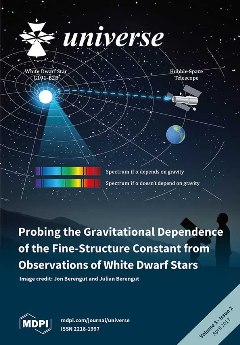This review discusses confinement, as well as the topological and critical phenomena, in the gauge theories which provide the condensation of magnetic monopoles. These theories include the 3D SU(
N) Georgi-Glashow model, the 4D [U(1)]
-invariant compact QED ,
[...] Read more.
This review discusses confinement, as well as the topological and critical phenomena, in the gauge theories which provide the condensation of magnetic monopoles. These theories include the 3D SU(
N) Georgi-Glashow model, the 4D [U(1)]
-invariant compact QED , and the [U(1)]
-invariant dual Abelian Higgs model. After a general introduction to the string models of confinement, an analytic description of this penomenon is provided at the example of the 3D SU(
N) Georgi-Glashow model, with a special emphasis placed on the so-called Casimir scaling of
k-string tensions in that model. We further discuss the string representation of the 3D [U(1)]
-invariant compact QED, as well as of its 4D generalization with the inclusion of the
-term. We compare topological effects, which appear in the latter case, with those that take place in the 3D QED extended by the Chern-Simons term. We further discuss the string representation of the ’t Hooft-loop average in the [U(1)]
-invariant dual Abelian Higgs model extended by the
-term, along with the topological effects caused by this term. These topological effects are compared with those occurring in the 3D dual Abelian Higgs model (i.e., the dual Landau-Ginzburg theory) extended by the Chern-Simons term. In the second part of the review, we discuss critical properties of the weakly-coupled 3D confining theories. These theories include the 3D compact QED, along with its fermionic extension, and the 3D Georgi-Glashow model.
Full article





